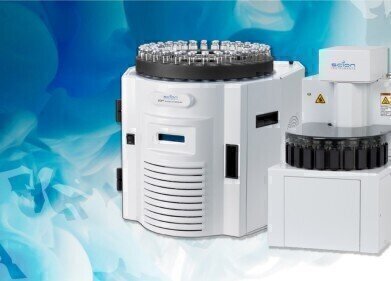Industrial News
Analysing Space Dust for the Ingredients of Life Using Chromatography
Feb 26 2015
What is the origin of human life? Of all life? Where did we come from? Is there a meaning to it all? These questions have historically been answered with the cure-all of religion; however, in a world that is becoming increasingly dominated by science and technology, the enthusiasm for religious dogma could be said to be on the wane.
By contrast, the Big Bang theory (no, not the TV show), as coined by English astronomer Fred Hoyle in 1949, has become increasingly popular (as has the TV show – but that’s irrelevant). The idea that life on Earth – and indeed, all possible forms of all life in other parts of our galaxy – were brought into being by a cosmic explosion which shook up particles and spawned the dawn of creation is often accepted as the most plausible.
Flaws in the Theory
Despite its growing acceptance, the theory still has many gaps in its knowledge. For example, we are able to posit that life on Earth was brought into being (or at least given a boost) by the delivery of foreign matter via comets and meteors, but we can’t prove this, or explain how it exactly happened… yet.
Traditionally, scientists have been able to detect traces of amino acids in carbon-rich samples of meteoric matter. Amino acids are used to construct proteins, which are essential in the creation, maintenance and regulation of life; they are instrumental in producing hair and skin, and can speed up or slow down growth. As such, the presence of these acids points to the supposition that such meteoric impacts were responsible for catalysing life on our planet.
However, these carbon-rich samples comprise a fraction of all meteoric substances that are harvested – only 5%. Furthermore, these amino acids discovered in them have typically been at an infinitesimal ratio, with concentrations in the parts-per-million or parts-per-billion. This calls into question how reliable such evidence is in naming meteorites and comets as responsible for the creation of life.
Chromatography Sheds New Light
However, a new technique has endowed scientists with the ability to analyse much smaller samples than ever before. Pioneered by NASA approximately a year ago, the technique is known as nanoflow liquid chromatography, and is now beginning to pay dividends in the realm of space dust analysis. For more information on how the technique was conceived and what exactly it involves, read this article: NASA develop nanoflow liquid chromatography. Or, for an even more in-depth explanation of the techniques involved, take a look at: Protein Analysis Using Proteotypic Peptides and LC-MS.
What this means is that scientists were able to study samples which were 1,000 times smaller than those they traditionally employ. In the future, such capabilities could be invaluable in analysing samples taken from Mars or other planets, since the size of samples collected on space missions is typically very small indeed. Michael Callahan, who is a member of the Goddard Space Flight Centre in Maryland, USA, was enthusiastic about the potential of this application of chromatography:
“Murchison is a well-studied meteorite. We got the same results looking at a very small fragment as we did a much larger fragment from the same meteorite. These techniques will allow us to investigate other small-scale extra-terrestrial materials such as micrometeorites, interplanetary dust particles, and cometary particles in future studies,” he said. “The traditional techniques used to study these materials usually involve inorganic or elemental composition. Targeting biologically relevant molecules in these samples is not routine yet. We are not there either, but we are getting there.”
Clearly nanoflow liquid chromatography could help to provide vital answers about where we came from… as well as perhaps giving David Bowie a response to his lyrical query: is there Life on Mars?
Digital Edition
Chromatography Today - Buyers' Guide 2022
October 2023
In This Edition Modern & Practical Applications - Accelerating ADC Development with Mass Spectrometry - Implementing High-Resolution Ion Mobility into Peptide Mapping Workflows Chromatogr...
View all digital editions
Events
ACS National Meeting - Fall 2024
Aug 18 2024 Denver, CO, USA
Sep 04 2024 Chiba, Tokyo, Japan
Sep 04 2024 University of Warwick, Coventry, UK
Sep 10 2024 Rockville, MD, USA
Plastics Recycling World Expo Europe
Sep 11 2024 Brussels, Belgium














